The Kinzua Bridge has been attracting tourists since the day it was completed in late August of 1882.
As the largest and tallest bridge in the world at the time of completion, it’s not hard to understand why. Even after it lost this title in 1885, the bridge was still popular with excursion trains from as far away as Buffalo, New York, and Pittsburgh. However, the Kinzua Bridge wasn’t built to be a tourist attraction.
A few years earlier, Thomas Kane, President of the New York, Lake Erie, and Western Railroad, had a problem.
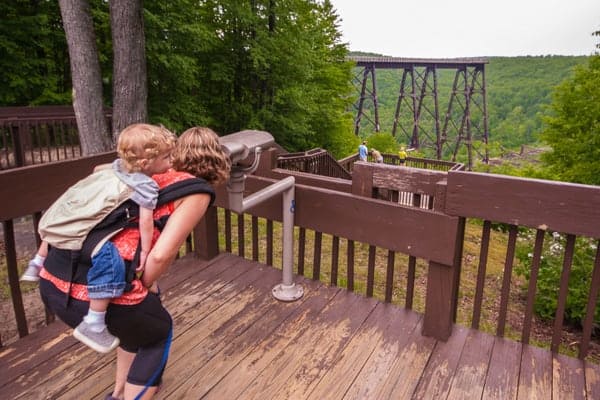
While trying to connect the rich coal mines of Elk County with the Pennsylvania Railroad track in Bradford, he had to make a difficult and expensive choice: should he build the largest railroad bridge ever attempted, or should he route his line eight miles across difficult terrain to an easier crossing?
Ultimately, Kane chose to keep going straight across the Kinzua Valley.
The bridge itself only took 94 days to complete, an engineering feat in itself, and was over 300 feet high and 2,500 feet long. Despite the quality of the bridge, the use of iron in its construction did not allow it to accommodate the large locomotives that soon came along, and the bridge was completely dismantled and rebuilt from steel in 1900.
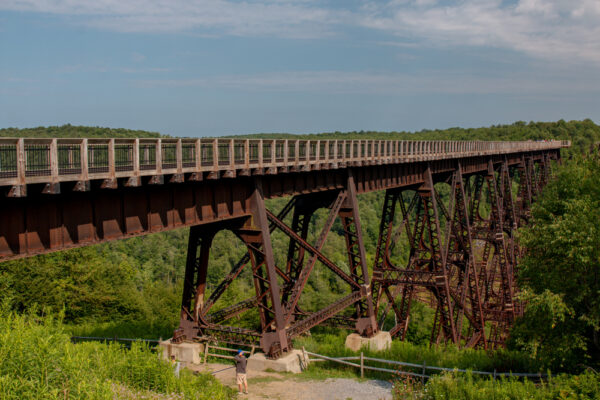
Over the next 59 years, the Kinzua Bridge was an important freight rail link in the region. However, in 1959, the bridge was sold to a company that planned to tear down the bridge.
Fortunately, upon seeing the beauty of the bridge, the company’s president decided that it was too wondrous to tear down, and the bridge was soon sold to the state of Pennsylvania, who turned the area surrounding the bridge into a state park.
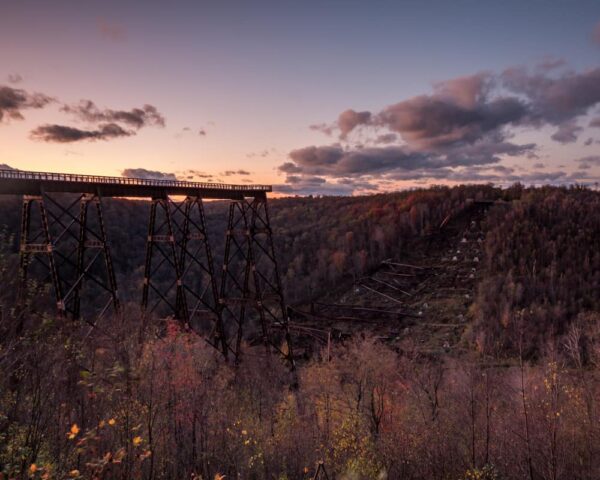
Soon, excursion trains were once again crossing the bridge and millions of visitors came to the bridge each year to walk across its still impressive expanse. However, in 2002, it was discovered that the bridge had serious structural flaws that necessitated repairs, and the bridge was closed to traffic.
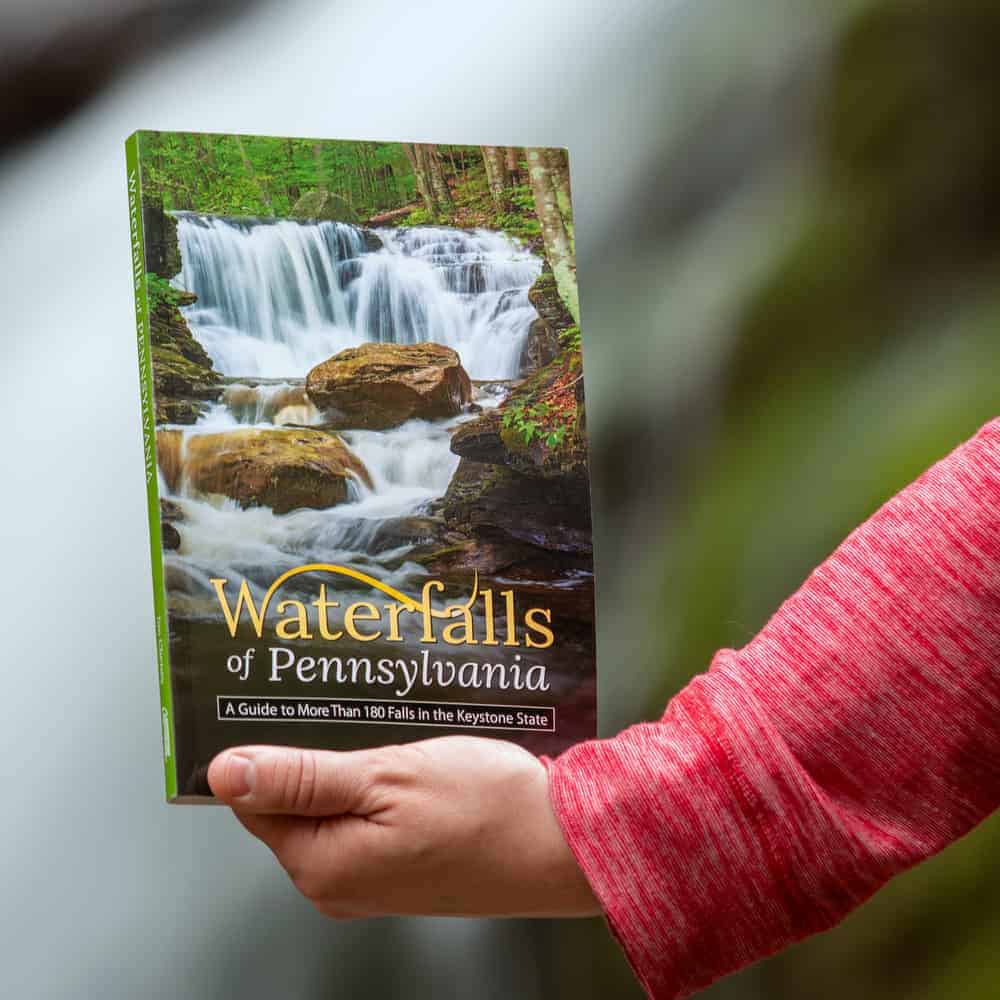
"Waterfalls of Pennsylvania" by Jim Cheney
If you love PA waterfalls, you won't want to miss this waterfall book from Jim Cheney, author of Uncovering PA, featuring more than 180 great waterfalls. Order it now on Bookshop.org or Amazon.
While those repairs were started, they were never completed.
On July 21, 2003, an F1 tornado touched down in the Kinzua Valley and destroyed 11 of the bridge’s 20 towers. Looking at the costs of rebuilding the bridge, the state instead decided to create a skywalk with the remaining 600 feet of the Kinzua Bridge after the tornado.
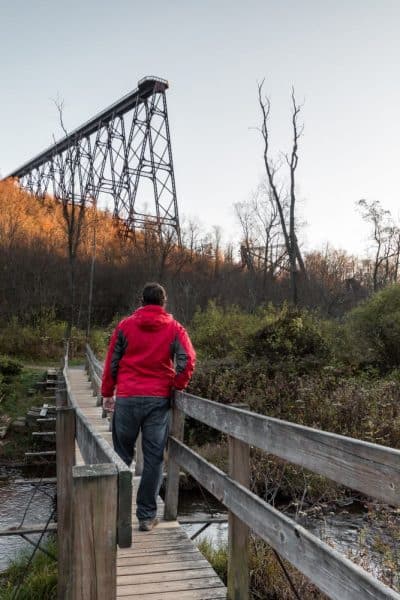
It was more than 8 years after the tornado before the new Kinzua Bridge would open to the public in September 2011. However, when it did, it instantly became a must-visit tourist destination in Pennsylvania.
Unfortunately, I never had the opportunity to visit the Kinzua Bridge before it was destroyed. However, visiting the new skywalk, I was awestruck at its beauty, spanning 600 feet out into the valley and roughly 225 feet above the Kinzua Creek below.
Walking to the now abrupt end of the bridge is a breathtaking sight, both for the natural beauty of the valley, but also for the evidence of the storm’s strength below.
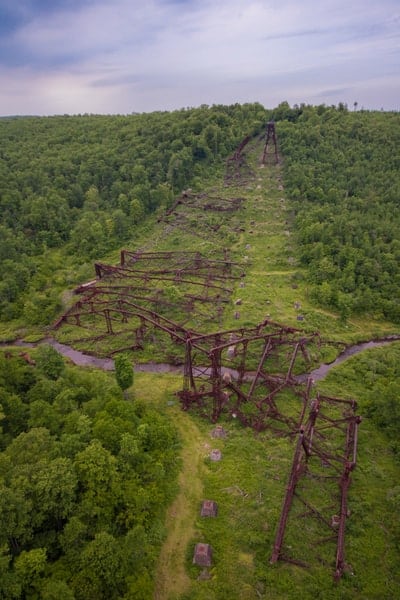
When redesigning the bridge, it was decided that the toppled remains of the bridge should remain where they fell in 2003. Scattering the valley floor below the end of the bridge is the twisted metal remains. The Kinzua Bridge collapse is a great testament to the destructive power of nature.
Another highlight of the new Kinzua Bridge is the glass floor that covers a portion of the bridge near the edge. While it may not be as high above the ground as the glass floor at the Grand Canyon Skywalk or the CN Tower in Toronto, Canada, it’s still high enough to give you a moment of panic as you step onto it and stare down at the ground 200 feet below you.
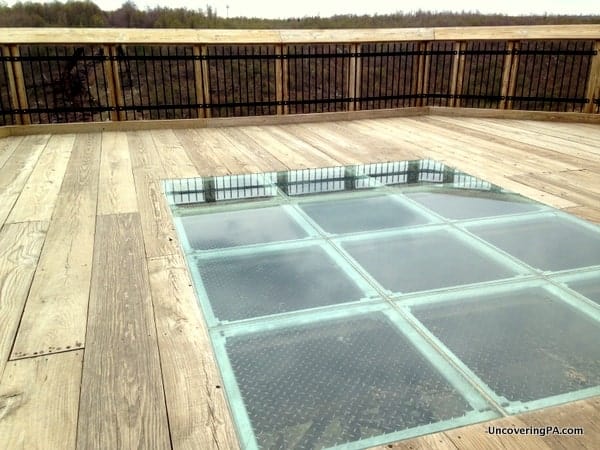
If you want to get a view of the bridge itself, there is a trail to the right of the bridge that goes down to the bottom of the valley.
Along the way, there are three vantage points, the first of which is handicap accessible. The third viewpoint is located directly under the bridge and offers a great look through the remaining trusses.
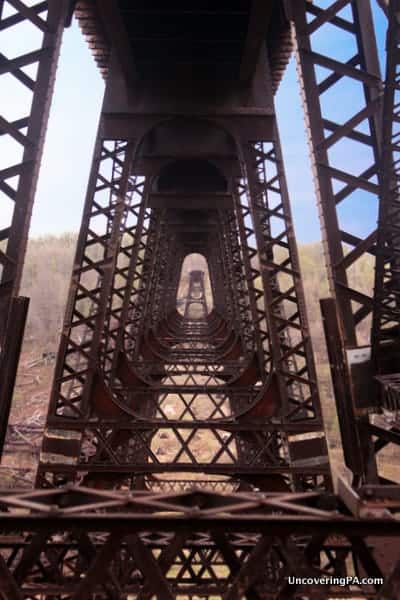
From this viewpoint, the trail gets VERY steep as it heads down to the bottom of the valley. Fortunately, giant stone steps have been installed recently, but the trail is still one of the more challenging official trails I’ve done in PA.
If you opt to do this, use extreme caution as the trail is difficult to navigate and very tiring to ascend. I wouldn’t attempt this trail without proper footwear.
Once at the bottom, the view of the bridge above you and the wreckage all around is quite impressive. Small side trails take visitors up to the wreckage (though the area between the wreckage is now closed), and a small, rickety bridge crosses the small Kinzua Creek.
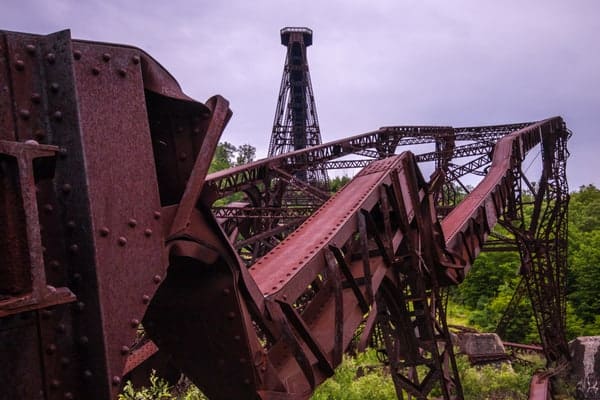
If you opt to get close to the wreckage of the bridge, make sure to exercise extreme caution. There is a lot of sharp, rusty metal, and it would be very easy to get seriously injured.
While it’s easy to spend all your time exploring the bridge, make sure to save time to visit the visitor center at Kinzua Bridge State Park.
Opened to the public in 2016, this visitor center features a fantastic museum that tells the story of the area, the bridge, and its destruction. From what I’ve seen, it’s the best state park museum in Pennsylvania.
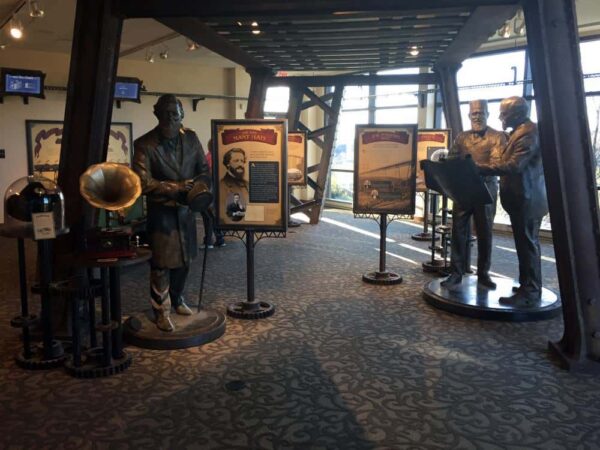
Without a doubt, Kinzua Bridge State Park in McKean County is one of the best state parks in Pennsylvania. It offers amazing history and beautiful natural scenery that can’t be found elsewhere in the state.
While the area is beautiful at any time of the year, it is even more beautiful during fall foliage season. However, no matter when you have the chance to visit, consider this one of Pennsylvania’s must-visit state parks.
Looking to extend your trip near Kinzua Bridge State Park? Head to more natural sites such as the Allegheny Reservoir and Hector Falls or pay a visit to the Old Jail Museum. If you enjoy large bridges, you can also travel east to Tunkhannock Viaduct and the Starrucca Viaduct.

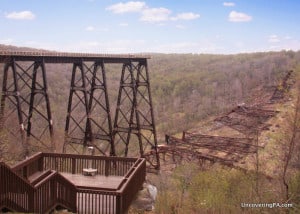
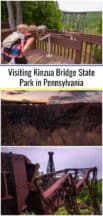
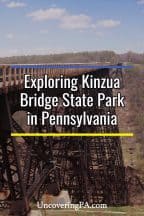
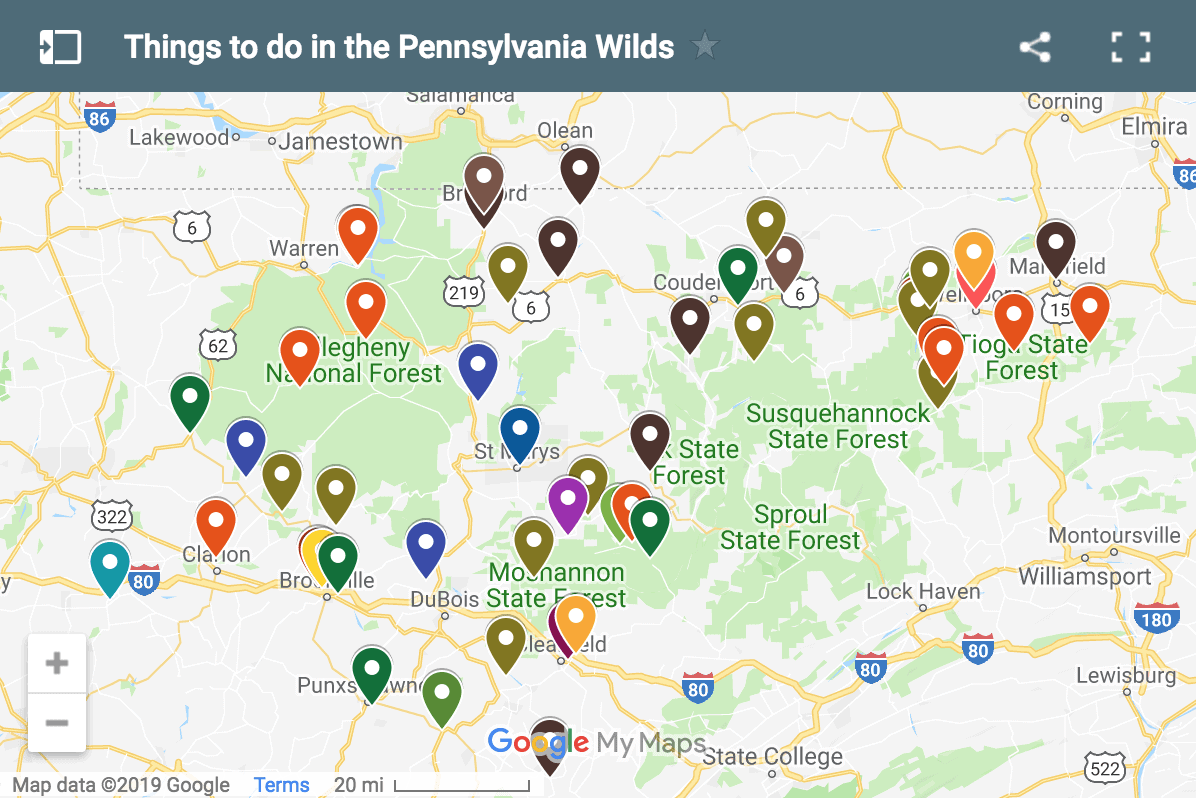 "
"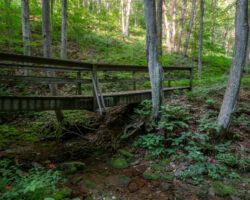
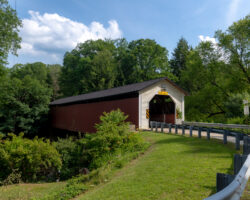
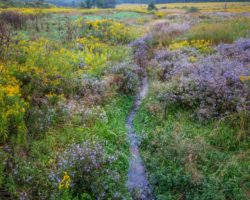
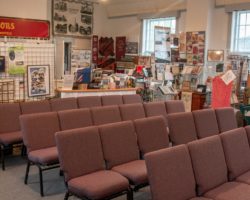

we went to that when it was open with the excursion train running quite a few times…We wanted everyone we knew to see it..and we have a cabin in Potter County…It was fun you rode the train across and then ate your box lunch and rode back…It was a very very sad day when it all came down like a dominoes. We just took our grandsons there last year because we wanted to see what it looked like now. It was heartbreaking. Though the kids did enjoy the skywalk, but they never got to enjoy the train ride.
It really is a shame about the train ride. I would love to have had the chance to ride a train across the bridge.
sign me up
Would have liked to see a full picture of the new span.
Charles, There is no new span. The way it’s shown in the top photo is what it looks like today. After the bridge was destroyed, they left the rubble below and made the remaining bridge an observation deck.
I know we talked on Instagram about this, but my family lives in Warren County and has been visiting the park every year since I was a kid (both pre-storm and post-storm). When my sister was in elementary school, she rode the train over the bridge on a field trip. I was sad to see it blown down, but we were excited they decided to preserve its memory in this way leaving the wreckage for all to see. It’s quite a sight!
I will never forget July 21, 2003. My family rented a van to carry us across Route 6 (we live in NEPA). On the very day we were going to visit the bridge for the first time, we noticed how stormy it was, but we kept going. We had already turned off Route 6 and were on the road leading to the bridge, when a tree fell across the road in front of us. My brother-in-law and I moved the tree (it was rotten and not huge), but we all decided to go back to Route 6. We were stuck for a while at the intersection due to road closings. Plus, the power was out. When we finally got to our motel later that day, we heard about the bridge. I honestly believe the Lord dropped that tree in front of us to keep us from the harm just up ahead.
Since then, some of us have been to the bridge on the way out to my wife’s sister’s place. We enjoyed being able to walk on the bridge and see all the work that has been done to preserve that important historical site.
That’s quite the story, Mark. Thanks for sharing.
The bridge was under construction to be rehabbed since it was in very poor condition. The first day of our inspection in 2002 for the State Parks Dept. (DCNR) we had to close the bridge to trains.
I rode over that bridge in the caboose of a train in 1950. My dad worked on the railroad on construction with Mike Rich
When my dad was a teenager, he used to ride his motorcycle across the bridge while trains were using it (not at the same time) when there were no sides in the bridge, just track. He just loves reminiscing over that!
We rode the train across the bridge several years ago when my daughter was a little girl – It was fall and we rode in the outside car – was a fun time. Felt saddened when the bridge fell.
That sounds like a great experience. Wish I could have done that before it fell.
I had the pleasure of enjoying the train ride over the bridge. We went in the fall and the scenery was beautiful. It is sad that I never got to take my children on the ride, but I have many photos of the trip and at least they get to see those.
I rode over the Kinzua bridge in 1987 as part of a National Railway Historical Society excursion. We rode part of the journey pulled by a diesel locomotive and the over the bridge by former Huntingdon & Broad Top locomotive No. 38, a standard gauge locomotive that once hauled coal from the Broad Top mines of Bedford and Huntingdon counties in south central Pennsylvania. No. 38 is the last and only surviving H&BT locomotive and is currently being overhauled and restored to its former glory.
Growing up we had a camp in Ludlow, outside of Kane and visited the bridge many, many times. We walked across it, hiked all of the trails and I also rode the train across when it was running. At the end of 2014 I was back in PA visiting family, my sister and I drove up and went to see how it is now, it was so, so sad to see but did bring back those incredible memories. I recommend if you have the chance to visit definitely do so!
Our favorite picture is of our four kids on a cross member under the bridge in 2000 after we crossed to the north an walked the trail back down the mountain across the stream and back up the south side. It really was a beautiful bridge, so breath taking to see a giant in the middle of the woods.
Thanks.
HI Jim,
My family rode the train over the bridge in 1992. What a great experience. My Dad had been going to the
bridge since the early 1930’s. I’ve often thought if the bridge was rebuilt and connected to Rt 58 (?) to
the north, the area could have been a hub sort of the Scranton of the West.
I’ve never known there are paths across the bottom to explore. We love the Rt 6 corridor as well.
Thank you for this great site.
The bridge was/is beautifully amazing. Too bad there isn’t more history about the first train to go over it…. with no sides…. for as breathtaking as it was, I’m sure it had to be breathtaking in fear too.
I was born and raised in PA. Visited the bridge many times before the tornado. Seen the destruction soon after while visiting family. Is was a sad day indeed. I am so glad to see they are preserving a part of this historical site!
I walked 3/4 across it back in the ’90s in January. It was cold and windy, I had to turn back. We took our family on a Route 6 vacation and stopped there just after the Tornado. It was so sad to see it like that.
What a wonderful website! It is so nice to see how they have preserved this historical site. I have not been there yet, but will make sure that this site is at the top of my list of short trips, My father and mother used to take short trips around that area and he loved going there, That was back in the 1960’s.
Thank you!
Linda Nolf
Our family has a camp near Mt. Jewett. My husband was there the day the tornado hit; we didn’t believe him when he told us. It almost felt like losing a member of the family.
We were there the Friday before the tornado. We rode the train up to the bridge and walked around. I was back last year to see the new look out. A beautiful place to visit.
Grew upin Smethport . Had a camp and farm in Irons Hollow. Visited the bridge many times and walked the crude triangle track the train used in the woods on the other side to turn around to return to Marionville. My favorite time was peak color week in the fall. The car clubs, bike clubs and other orgs. were always fun to see.
My most memorable place to visit. We went there when i was a child. We WALKED across the still up train bridge! We saw the bridge still up one week before the storm took it down. I still go visit this spot and still get chills!!!
I was born and raised in potter county Pa. I had a counselor that took me there many times and went on school trip though i never rode the train but we always took all the paths it had.when i was done with that my cousin was seeing some other counselor he told me(it was couple of day after) a tornado had hit it. it was hard for me to believe at first and he took me and my cousin to see.I was awestruck it was sad for me.I have not seen it since tornado but looking forward to see it again miss it
When I was on the road in the ’80s, early ’90s, I had the opportunity to ride the train across… Unfortunately, I told myself, “Oh, I’ll get around to that later, I’m too busy now, I’ll do it later/sometime/whenever”… Yeah, too late now. I took my wife on a road trip last year up to Bradford & vicinity, so we did see & walk the Skywalk. Very sad, but very great as a State Park.
A friend and I rode across the bridge in October 1987 on the excursion train. Part of the trip was diesel, the other by steam locomotive. The steam locomotive was former Huntingdon & Broad Top Mountain Railroad #38 that operated between Huntingdon and Saxton and Saxton and Bedford. That locomotive pulled many train loads of Broad Top coal to Market at Huntingdon.
This 301-foot-high Pennsylvania landmark was twisted and strewn about the valley floor by the very stuff you are breathing as you read this…but, of course, while moving REALLY fast. Pretty remarkable to ponder, when listening to your own breath as you inhale and exhale, that this structure weighed over 6.7 million pounds and now only a fraction of it remains standing.
The question I’ve posed to several weather experts over the years of whether Kinzua Viaduct might represent the “Most Massive’ Man-made Structure EVER Toppled by a Tornado” on earth. Though not fully resolved, there can be little doubt, when staring down from the spectacular SkyWalk at the tangled, tormented wreckage lying down in the gorge, that it is definitely a contender. In 1949, when all that mangled steel still soared mightily above the gorge, an article on the famous span was printed in the Erie Railroad Magazine (the company ’employee and customer publication’ of the bridge’s builder and owner). The piece was titled — appropriately — “Tracks Across the Sky”. The sky got really angry and loud on July 21, 2003 and, suddenly, the majority of those tracks no longer crossed the sky…
The engineering analysis of the December, 2003 Commonwealth of Pennsylvania’s Department of Conservation and Natural Resources report on the Kinzua Event noted: “The orientation and location of the debris field of the structure identified the specific wind directions and order of collapse. The majority of large-scale distortions within the viaduct’s debris field are attributable to secondary impact damage as the airborne structure segments became earthbound.” An emotionless, nearly clinical description that essentially says that all that steel got tossed about like Jack Straws and came crashing down in the permanent, jumbled heaps now visible from the SkyWalk.
My family visited numerous times from the Sixties until just this past year. I walked across the bridge and back with my toddler son on my shoulders. (Now nearly thirty, he says he still hasn’t forgiven me!) I’m glad they preserved its memory as they have, but sorry that it was necessary vs. having an intact, strengthened bridge on which to still ride excursion trains…
My family had a vacation home in Lantz Corners just a short drive from the Bridge. Our three sons grew up visiting the Bridge and we all walked across it every time we visited and we also took balsa wood airplanes and flew them off the bridge before the tornado hit! This was about 30 years ago! We loved the area and also went to the Dam, Jakes Rocks, went to the beach, had huge ice cream cones at the shop in Mt Jewett! My brother and nephew still go fishing around the area and we as a much bigger family now are planning a visit soon to show the grandkids were their Dad’s vacationed! Thank you for sharing!
My grandfather, M. Earl Ganoe, who was born in Clarion in 1887, told a story about how as a young man, he had climbed to the top of the bridge and left his initials there It wouldn’t surprise me if that was a fairly popular thing to do.
I was there maybe a month or two after the tornado hit the bridge. The destruction all around was incredible. The far side mountain was nothing but flattened trees that reminded me of Mt. St. Hellen volcano destruction. The tracks were bent over the end of the bridge at a 180 deg angle. Steel park benches were bent in half from falling trees. Many trees looked like wooden poles with no tops or branches. I’ll never forget seeing all this. I have a few photos of it too.
It has been several years since I was able to get the chance to see the Kinzua bridge it was one of the last places my son and John’s sons went to see it! To say the least I was impressed by the bridge as well as my son! We both loved the bridge and time we had with our dear friends!